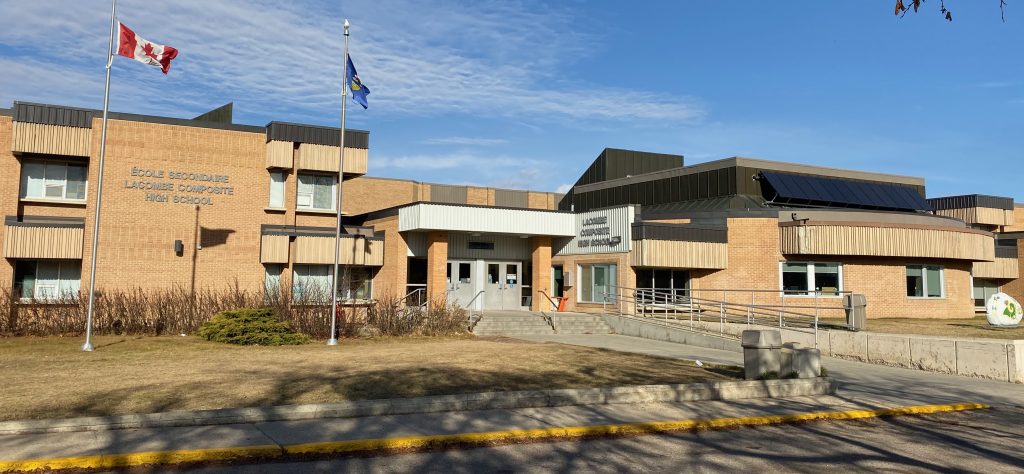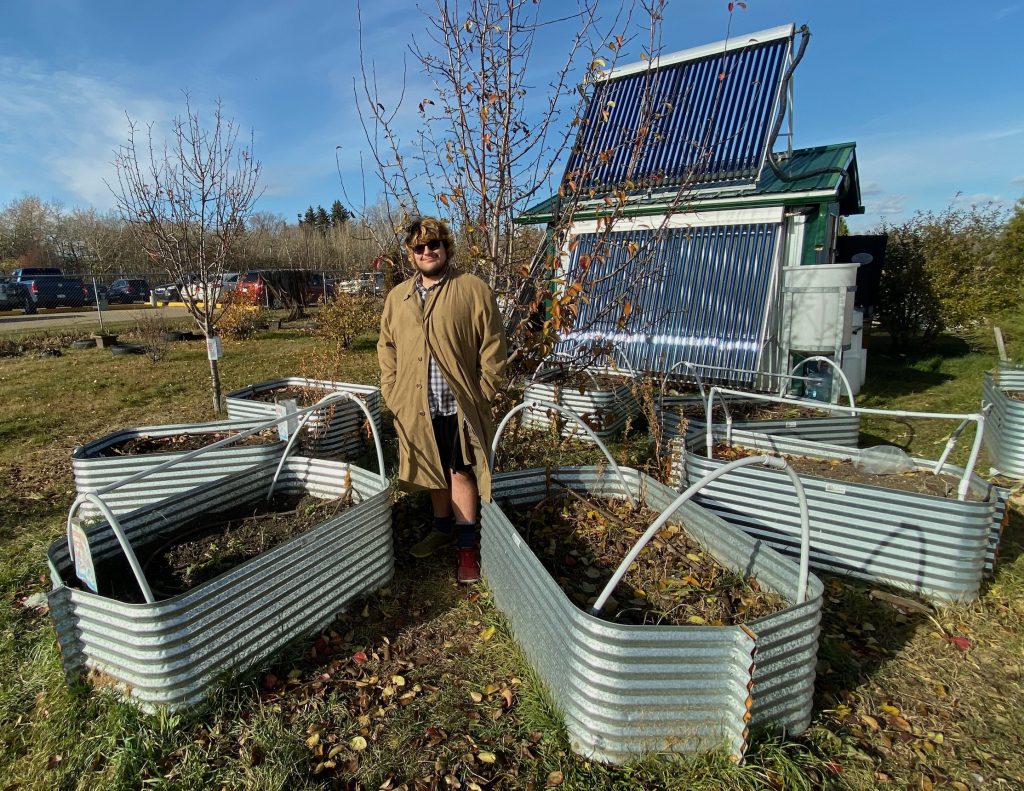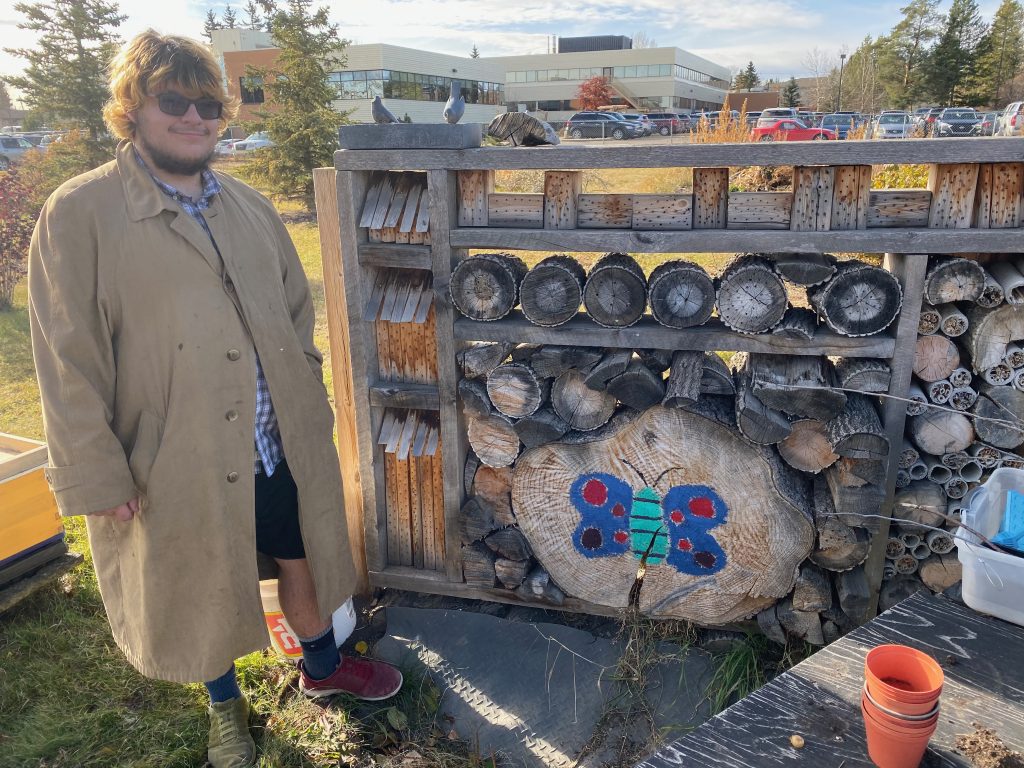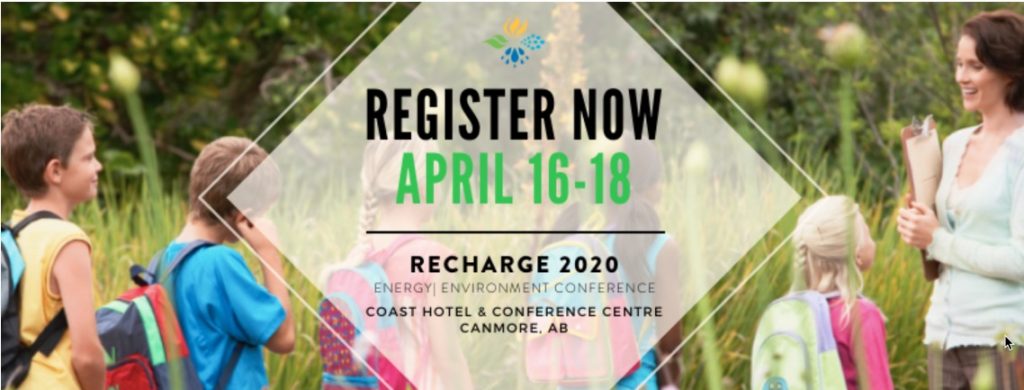By David Dodge and Kay Rollans
“Words without actions are meaningless,” Lacombe Composite High School teacher Steve Schultz said to his Science 10 class in the early 2000s. Those words inspired students at the school to set up the EcoVision club. In the dozen years that the club has been active, it has undertaken more than a dozen projects and has earned Lacombe Composite the title of Greenest School in Canada.
In 2006, “one of those Science 10 students, [then] in grade 12 in their final year, came up to [Schultz] saying they wanted to make a change and said they wanted to get our school off the grid,” recounted Darcy Cunningham, a current grade 12 EcoVision student leader.

Tyana Rudolfsen
That student was Tyana Rudolfsen. At first, Schultz was skeptical: “I said, ‘Well, you’re crazy and you need to pick a different teacher.’ She said, ‘No. You said this in grade 10.’ So I said, ‘OK. Well, these are the three things you have to do. Number one, you have to find a group of friends. Number two, you have to have a vision statement…And then number three is you have to come up with a plan.’”
Within one week, Rudolfsen had done all three, and work began on EcoVision’s first project: solar power for Lacombe Composite.

EcoVision: born of sun and fire
For three years, the students held monthly meetings, consulted with local experts, and began raising money for the solar system. They approached businesses for donations and canvassed door-to-door in Lacombe.
“We raised $40,000 and, believe it or not, that bought us a six-kilowatt solar system back in 2009,” says Schultz.
Then the unthinkable happened: about a week after the solar panels were installed fire broke out, “we were getting our roof redone at the school and the roofers left their torch on and left for lunch and a big windstorm came through and knocked the torch over, igniting the roof,” recounts student leader Cunningham.
As smoke billowed from the fire the high school was evacuated. “[Students] were cheering. They didn’t have to write that test they had the next day they got a break from school, got to go home early… But then Mr. Shultz, our teacher, says he’ll never forget the moment where the [EcoVision] students were at his feet just crying,” says Cunningham. After three years of work — some students’ entire high school career — “their dreams and passions were gone in minutes.”
Luckily, insurance replaced the burned solar modules, and EcoVision never looked back.
Solar geothermal geodesic greenhouse
Taking a tour through Lacombe Composite today, it is hard to miss the impact of EcoVision. Student leader Darcy Cunningham showed Green Energy Futures one of the club’s most visible projects at the school: the tropical solar-geothermal greenhouse.
After detailed planning and research, and the support of community volunteers, it took only nine days to build the greenhouse. Now, they use it to grow bananas, avocados, lemons, sunflowers, pineapples, peppers, succulents, fig-trees, and mint and other herbs.
“The amazing thing is it’s almost net-zero,” says Cunningham. In the greenhouse, “underneath the ground, we have a geothermal climate battery.” The system pulls heat out of the ground at night and replaces it during the day. The air vents in the greenhouse are controlled by beeswax and pistons, automatically opening when it’s hot and closing when it’s cool.
They also use water as a large thermal battery in the greenhouse. “We have a commercial aquaponics system. There are about 70 Tilapia fish in the tank right now. But what the tank does besides act as a home for the fish is it acts as a heat sink,” says Cunningham.
There is a renewable energy solution for heating the water, when necessary, too: outdoor solar thermal evacuated tubes that transfer the sun’s energy to the aquaponics system.
They have other growing spaces, too, including an indoor vertical garden and a garden outside with 40 raised beds and a unique aquaponics Smartdrip irrigation system. They also keep bees and operate composting programs.
During the summer, EcoVision works with community volunteers to help maintain their gardens, and students operate a small micro-business selling herbs, garlic, and produce to local businesses.
EcoVision’s latest project is called Roofs for Kids. It’s a solar-powered barn and an agricultural classroom with a green roof.
“We want to build an energy-efficient barn that can house a variety of different animals. We’re starting with goats because of their therapeutic value and because of their ease to take care of,” says Schultz.
Turning eco-action into education
Schultz realized the educational potential of the club’s vision right from the start. “I started reaching into our Career and Technology Studies (CTS) curriculum and started creating courses, and then started partnering with post-secondary institutes.”
He managed to weave solar power into his science classes, and then into the CTS curriculum. Now, students can earn up to 16 credits in programs directly related to green energy and green agriculture projects at the school.
“We offer a whole slew of about 20 to 25 agricultural classes now with the help of Olds College. And then we started to green certificate programs at our school. One is beekeeping and one is a greenhouse technician,” says Schultz.
These programs introduce new skills and make the students more employable in their semi-rural community, says Schultz.

Inspiration from doing
“When I came to high school, I was a really strong introvert and I had trouble speaking to one or more people at a time,” says Darcy Cunningham. This has all changed since he got involved with EcoVision. Last year, he traveled to Banff to give a conference presentation on the club’s projects to a crowd of 450 people.
“It’s also giving me the motivation to actually try hard in school so I can get a job or career similar to what I’m already doing now because I know what I love, what I’m doing right now. And I want to continue doing stuff, things like this that I feel passionate about for the rest of my life,” says Cunningham.
It’s a story Steve Schultz has heard many times: “I can speak story after story after story of our students that, you know, even hated school, [but] found inspiration [through EcoVision] that made them want to come to school.”

“I have a dream”
“I never, ever imagined in my life that when Tyana Rudolfsen came to me in 2006 and said, ‘I have a dream,’ that that dream would propel itself into 12 to 15 different projects,” says Schultz.
EcoVision’s work is inspiring ecological action in students, the community, and beyond. The students receive support and volunteer labour from the community, and their work is even being used by other educational institutions to kickstart other projects. Burman University, for example, is using the EcoVision greenhouse plans to build their own project and is developing a whole new botany program to go with it.
The club’s success inspires hope in Schultz. “The baton is now in their hands,” he says, “and I feel very, very confident that our future is in really, really good hands because I know they can make a difference. They can improve our ecological footprint.”

Students – Keen to make a difference?
Schultz ended our interview with some sage advice for students who want to make a difference.
“Don’t get discouraged,” he said. “There are what I call ‘eco-champions’ in every community. People that believe you can make a difference. Reach out to a teacher that you feel you have the best relationship with and challenge them to go on this journey together with you.”
EcoVision Photo Gallery
Lacombe Composite High School was named the Greenest School in Canada in 2018 by the Canada Green Building Council. Steve Schultz is a high school teacher at Lacombe Composite and a teacher advisor for EcoVision. Darcy Cunningham is a current student leader with EcoVision. Tyana Rudolfsen, the founder of EcoVision, is now a marine biologist. While the school is not yet off the grid, the ripple effects of EcoVision’s many projects are felt far and wide.





